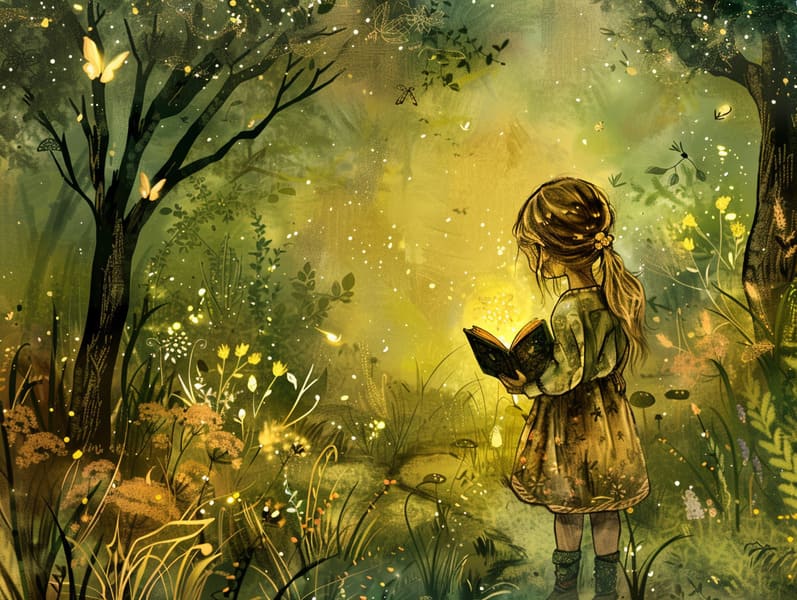
Vintage fairy tales have enduring presence. These narratives have been relayed from one generation to the next millennia before they were ever written down. They sprang from a variety of traditions, including Middle Eastern traditions. They were initially shared among grown-ups, often carrying themes and messages pertaining to the societal norms and beliefs of the time.
Jacob and Wilhelm Grimm, the two Grimm brothers, were among the first to assemble many of these beloved fairy tales. Their collection, "Grimm's Fables," included classics like "The True Bride," "The Bread Crumb Trail," and "Little Snow White," which have since become staples in the world of timeless fairy tales. Similarly, the Danish author's whimsical stories, such as "The Sea Maid," and "The Duckling that Could," have captivated hearts worldwide, cementing their place in the pantheon of timeless fairy tales.
Though they are centuries old, traditional fairy tales remain as significant as ever, especially as nighttime stories for kids. These magical stories are now available in diverse formats, including vividly illustrated books, delightful animations, and internet fairy tales.
Their ongoing significance can be traced to several delightful features:
Crucial Morals: Ancient fairy tales often provide important moral lessons. Narratives like "The Shepherd Boy and the Wolf" teach the value of truthfulness, while "The Hare and the Tortoise" stress the benefits of steadfastness and humility. These tales offer young readers clear distinctions between moral and immoral, molding their moral compass in a subtle yet lasting way.
Empathy and Understanding: Old fairy tales frequently include heroines facing struggles and tests, urging young readers to understand with their struggles and cheer for their triumphs. For instance, "The Story of Beauty and the Beast" conveys the necessity of looking deeper to appreciate the true being of a character, fostering tenderness and recognition.
Cultural Insights: Many traditional fairy tales are rooted in the cultural contexts from which they came. Immersing in these stories can provide captivating looks into different customs, building a sense of global insight and respect.
Fantasy and Imagination: The fantasy-filled elements in traditional fairy tales—enchanted forests—invigorate children’s innovations. These tales move readers to otherworldly realms, enlivening creative thinking and a sense of astonishment that persists a lifetime.
Ancient fairy tales are not only captivating but also educational. They provide bewitching tools in enhancing various mental and emotional abilities in little ones. When old fairy tales are narrated, they boost speech development by presenting new lexicon and detailed sentence structures. This practice also boosts auditory perception and concentration, as the young concentrate deeply, enthusiastic to see what happens next.
Furthermore, examining the themes and characters of ancient fairy tales can enhance analytical skills and analytical skills. Young ones are led to find patterns, anticipate outcomes, and catch on to cause and effect. These analyses also facilitate the young voice their thoughts and feelings, advancing their emotional intelligence.
In today’s cyber age, the existence of online fairy tales has made these tales more within reach than ever. Online platforms and online apps present comprehensive collections of Grimm's fairy tales that can be looked at or listened via anytime, anywhere. Fairy tales voiced are click here particularly widespread, supplying an interactive method for young readers to appreciate these fantastical tales. Narrated books and read-out-loud stories bring characters and settings to life, often supplemented by entrancing melodies and harmonies that intensify the story journey.
The persistent attraction of traditional fairy tales lies in their ability to adapt to today's world while continuing with their central values. Contemporary modernizations of these fairy tales often highlight more inclusive protagonists and modern settings, making them relevant to today’s audience. However, the fundamental themes of bravery, kindness, and rightness remain unchanged, continuing to impact young listeners of all ages.
Ancient fairy tales also offer a sense of serenity and knownness. They highlight a coherent narrative with a transparent beginning, middle, and end, often winding up with the closure of conflicts and the triumph of virtue over corruption. This steadiness can be reassuring for young readers, rendering a sense of solidity in an unstable world.
Traditional fairy tales continue to charm and enlighten new generations, maintaining their radiance and importance in modern society. As kids' bedtime tales, they bring a perfect blend of wonder and wisdom, boosting moral values, empathy, and creativity. The availability of free fairy tales online and the favor of fairy tales voiced confirm that these classic narratives remain attainable to new generations.
By maintaining and sharing these stories, we continue to admire the rich tapestry of folklore and cultural heritage. Whether you are browsing a artistically illustrated book, seeing a digital collection, or listening on an spoken story, the spell of traditional fairy tales is always within reach. These narratives convey of the enduring ability of tales and its ability to bring us together across time and space.
Be it you are browsing a vividly illustrated book, delving into a online library, or hearing an narrated book, the beauty of popular fairy tales is always within reach.
These stories point out of the continued nature of narratives and its ability to gather us across centuries and lands, forming a connection that charms and informs alike.